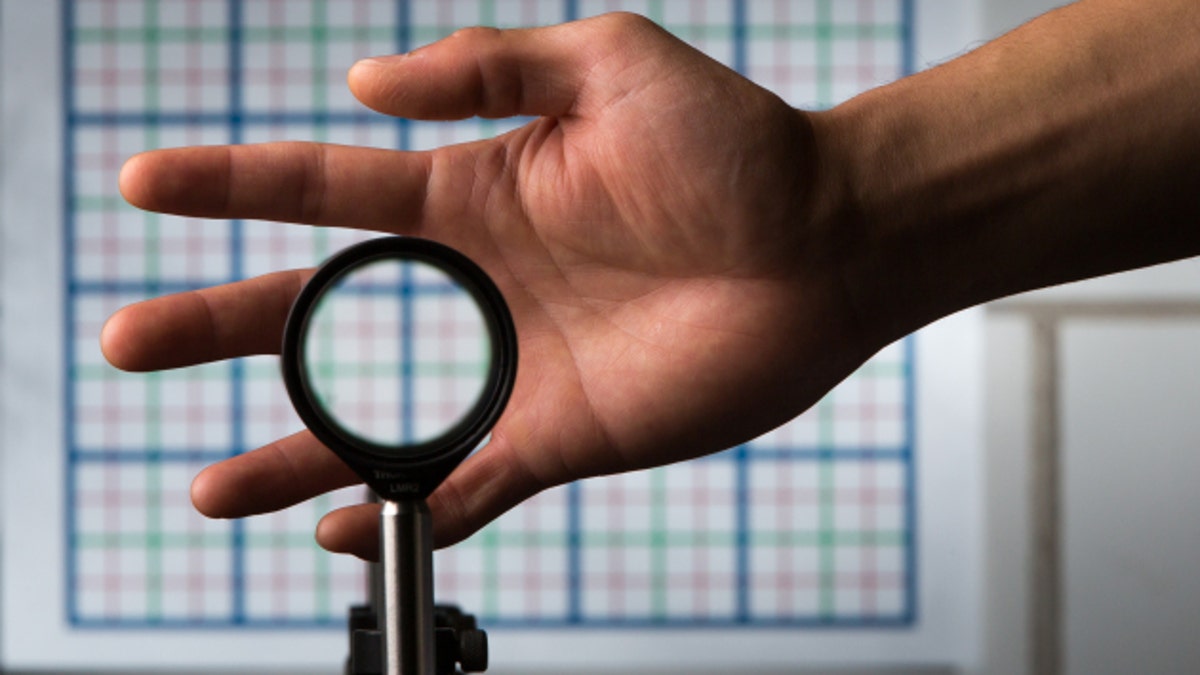
A multidirectional `perfect paraxial' cloak using 4 lenses. For a continuous range of viewing angles, the hand remains cloaked, and the grids seen through the device match the background on the wall (about 2 m away), in color, spacing, shifts, and magnification. The edges of the optics can be seen since this is a small-angle ('paraxial') cloak, but this can be reduced by using large optics and for distant viewing; also the center of the device must not be blocked. // an optical cloaking configuration designed by University of Rochester professor of physics John C. Howell and Ph.D. student Joseph Choi is pictured in Bausch & Lomb Hall September 11, 2014. // photo by J. Adam Fenster / University of Rochester (J. Adam Fenster / University of Rochester)
Hats off to scientists at the University of Rochester in New York, who have managed to produce a cheap ‘invisibility cloak’ effect using readily available materials and a lot of clever thinking. Through a combination of optical lenses, any object that passes behind a certain line of sight can be made to disappear from view.
‘The Rochester Cloak’, as it’s being dubbed, uses a simplified four-lens system that essentially bends light around any objects you put into the middle of the chain — you’re able to see the area in the background as normal, but not the item in the foreground. According to its inventors, it can be scaled up using any size of lens, and the team responsible for the setup has used standard, off-the-shelf hardware.
Related: Duke University researchers have created the world’s first acoustic invisibility cloak
“People have been fascinated with cloaking for a very long time,” said John Howell, a Professor of Physics at the University. “It’s recently been a really popular thing in science fiction and Harry Potter… I think people are really excited about the prospect of just being invisible.”
“From what we know this is the first cloaking device that provides three-dimensional, continuously multidirectional cloaking,” said doctoral student Joseph Choi, one of the team who worked on the project, when speaking to Reuters. “I imagine this could be used to cloak a trailer on the back of a semi-truck so the driver can see directly behind him. It can be used for surgery, in the military, in interior design, art.”
What makes this system so interesting is that it’s simple, inexpensive and capable of working at multiple angles, as long as the object remains inside the series of lenses. Howell and Choi say it cost them $1,000 to get all of the necessary equipment together, but it can be done more cheaply. A patent is pending for their invention but the pair have put together instructions on making your own Rochester Cloak at home for less than $100.
